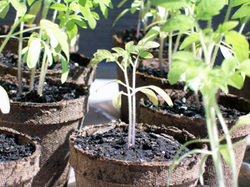
September 1st is the last chance you will have to cut back poinsettias if you need to do so. Pruning after this time will interfere with their blooming. Make sure poinsettias in your landscape don’t receive artificial light at night from nearby streetlights or porch lights etc. If they do there is a good chance that they may not bloom.
Pecan trees need for moisture is critical this month especially to minimize nut drop. It is not unusual for south Louisiana to experience dry conditions as we transition in to Fall. Be prepared to water pecan trees by letting a hose run very slowly for several hours a couple of times per week in the absence of rainfall. Be aware that one of the characteristics of pecan trees is that they have relatively brittle wood and limb breakage is not unusual especially with a heavy nut crop when it is raining with gusty winds. That is a primary reason that when planting pecan trees they be placed at 50 – 60 feet from buildings or other structures in order to minimize damage in case of limb breakage.
All avid gardeners understand the benefit of mulching and the value it brings to plants such as conserving moisture, suppressing weeds, reducing soil compaction, adding nutrients to the soil, and improving the soil structure making it easier for roots to expand and extract much needed water and nutrients from the soil. However over the course of the year mulches break down and should be replenished to maintain a 2 – 3 inch layer of thickness. Some gardeners prefer the look of commercial mulches instead of leaves, dry grass clippings or pine straw. One suggestion is to put down a couple of inches of free mulch then top it off with a commercial mulch if that is the appearance your prefer.
Generally when we have mild winters in Louisiana, bananas may produce fruit during the summer. Wait until the fruit start to turn yellow, cut off the whole stalk and hang it up. Pick the fruit from the stalk as they turn yellow. You can also cut the stalk when the bananas are full size but still green. They will ripen off the tree.
As you’ll know hurricane season is hitting its stride this month so make whatever preparations that are necessary in case a hurricane develops and threaten south Louisiana. Pay attention to trees that may show signs of weakness such as dead branches which should be pruned off, or if a tree is dead it should me remove since it is a safety hazard.
It’s very important that gardeners be aware that on our late winter or Spring flowering shrubs such as gardenias, hydrangeas, azaleas, sasanquas, and camellias have already set buds for their next crop of blooms. Pruning now will certainly reduce the number of blooms for their upcoming blooming season. Even though we take it for granted as Master Gardeners I receive numerous calls at this time of the year from gardeners wanting to know if it’s okay to cut back these shrubs.
From now on don’t apply any fertilizer containing nitrogen to most landscape plants or lawns. Fertilizing trees, shrubs, lawns and ground covers with fertilizers containing nitrogen can reduce winter hardiness, promote winter injury and in the case of lawns aggravate brown patch disease. Virginia Button Weed – I consulted with Weed & Lawn Specialist Dr. Ron Strahan of the LSU AgCenter regarding numerous calls from people wanting to know what is the best way to address this tough weed in home lawn at this time of the year. Dr. Strahan doesn’t recommend spraying as the only option because the weed has become tough and is heading toward maturity reducing the effectiveness of herbicides in controlling it. Dr. Strahan recommends pulling as much of it as possible, place it in a garbage bag and get rid of it. This will help to tremendously reduce the seed population in the lawn that were produce this year, and greatly reduce the number of seeds that will be sprouting next spring.
Until Next Month – HAPPY GARDENING!!!

 RSS Feed
RSS Feed